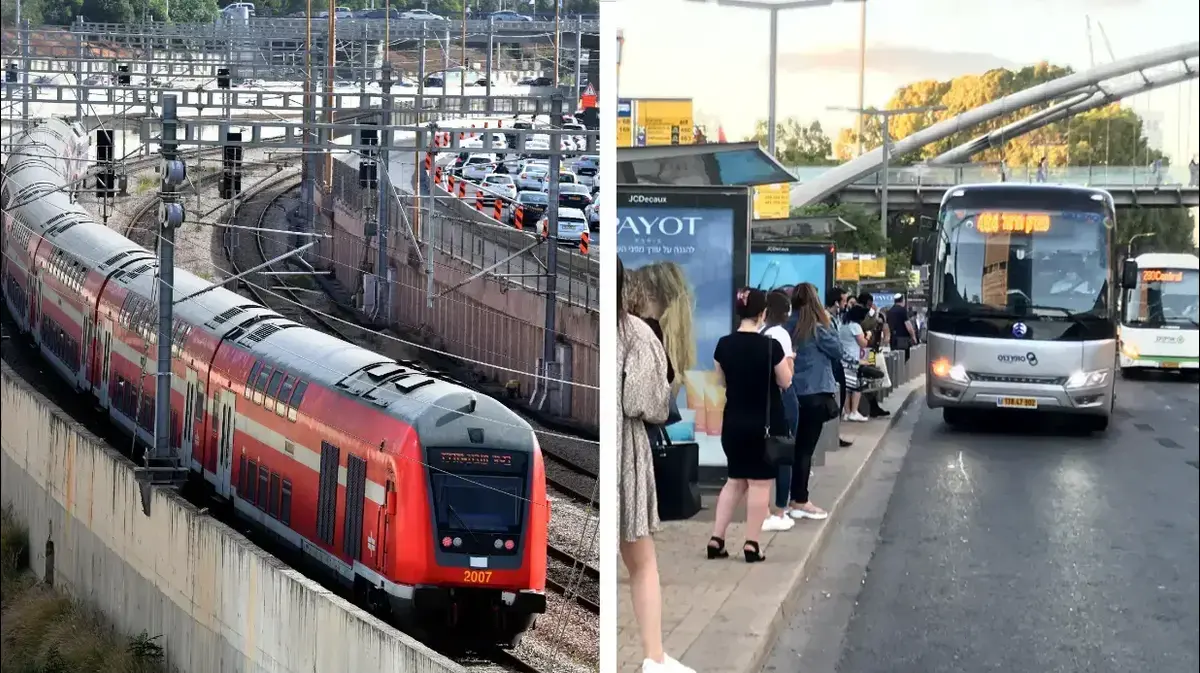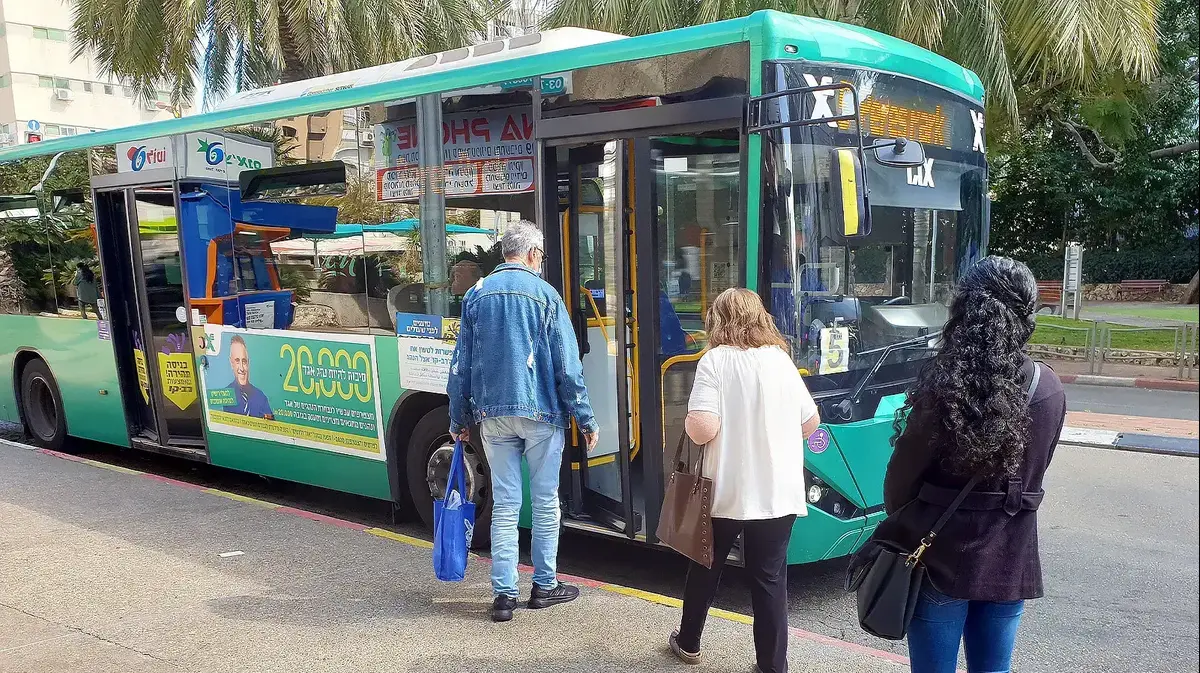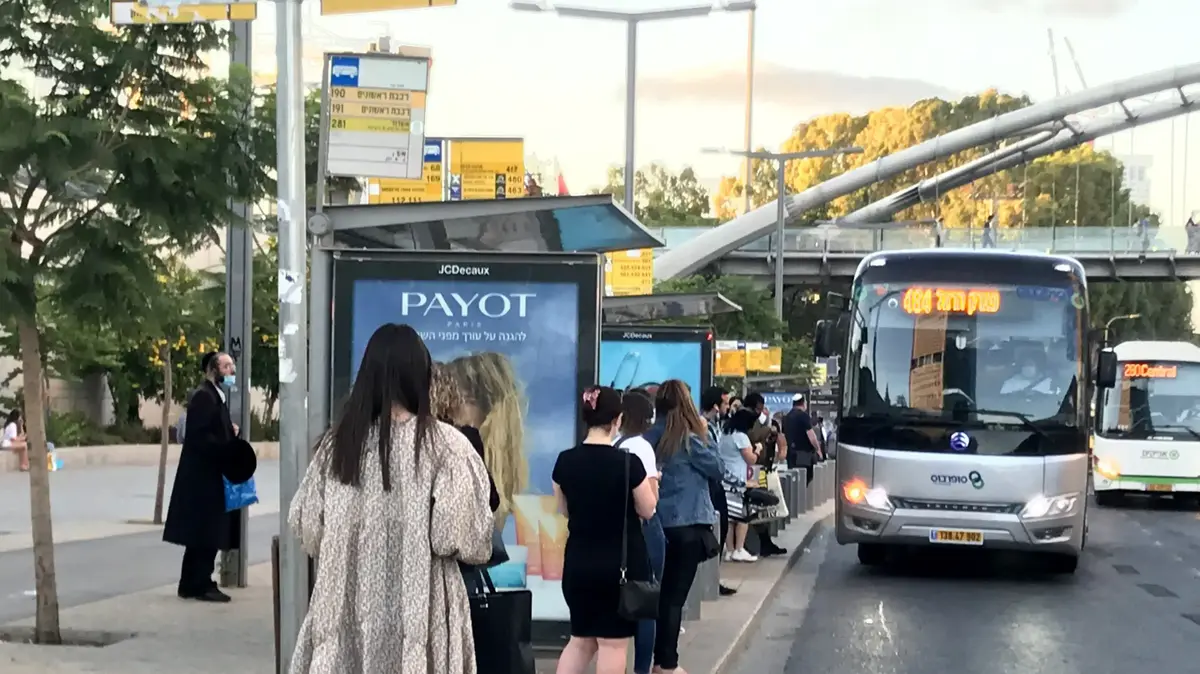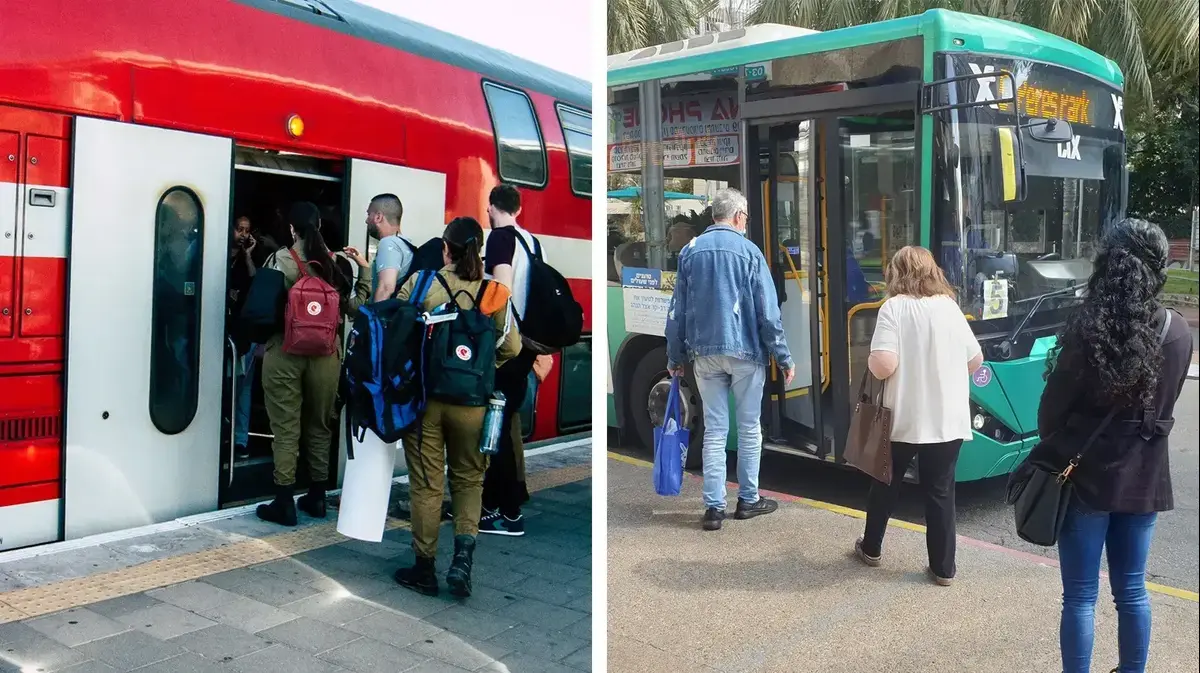The new arrangements, the winners and the losers: the public transport reform starts tomorrow
The prices of train and bus travel will vary for all public transport users based on the distances from point to point.
While significant discounts are expected for some passengers - others will suffer price increases.
So how do you calculate the rates and how much will it cost free-monthly?
all the details
Kenan Cohen
31/07/2022
Sunday, July 31, 2022, 2:25 p.m. Updated: 3:00 p.m.
Share on Facebook
Share on WhatsApp
Share on Twitter
Share by email
Share in general
Comments
Comments
On video: A revolution in public transportation: 75 and older will be able to travel for free (Corporation)
A week after the entry into force of the "Equal Way" reform in public transportation for app users, the change in bus and train prices is coming, starting tomorrow (Monday), to all male and female passengers.
In the reform, which was announced four months ago by the Ministry of Transportation, there are some very significant news for certain population groups and users, but also quite a few problems, among them those that provoked quite a few objections, some of which are very justified.
Just before we all start recalculating a route regarding public transportation payments, the guide in front of you lays out all the important questions and answers about what will happen here from tomorrow.
Why was reform necessary?
The price market for public transportation in Israel is built patchwork upon patchwork when it comes to fares.
Preference for areas in low socio-economic clusters, political pressure groups that cared about their base or just a lack of attention led to the fact that in the State of Israel there were about 80 fares for public transportation, so that a trip in Tel Aviv cost 6 NIS, in other localities 4 NIS and in some cities 3 NIS or 2.3 NIS In Ofakim, Beit Shean and more.
In other cases it was even less than that: Dimona, Racsim and Rocham the price could drop to only 1.5 shekels.
The unification of rates throughout the country.
The new central station in Tel Aviv (Photo: Reuven Castro)
The reform is intended to create uniformity in the price of travel based on distance from the starting point, as well as to enable the transition to payment in public transportation not through cash, but through advance payment arrangements.
How are fares calculated?
On buses, a single trip within a range of up to 15 km will cost NIS 5.5 and will allow unlimited passage between lines within 90 minutes. A regional bus within a range of up to 40 km will cost NIS 12 and a trip within a range of up to 120 km will cost NIS 16. Over 120 km, the trip will cost NIS 27.
New prices here too.
Israel Railways (Photo: Reuven Castro)
The fares for traveling by train are more expensive, and are 9 NIS for an urban or local trip (up to 15 km), a trip of up to 40 km will cost 18 NIS, a trip between 40 and 75 km will cost 24 NIS, up to 120 km "From NIS 27 and over 120 km, a trip will cost NIS 48.
What travel arrangements will the reform include?
Among the changes introduced by the reform are new rates for the familiar travel arrangements - free-daily and free-monthly.
When free-monthly-national without limit will cost only 225 shekels and free-monthly-national combined train and bus will cost from 255 shekels for a range of up to 15 km up to a maximum price of 610 shekels without any range limit.
Who will it cost more?
Five central groups are affected by the change brought about by the reform.
The first, naturally, is that of the residents of the cities where the lower rate of urban travel was customary.
The second group is the residents of the periphery, who until now have enjoyed especially low rates for long trips, and will now pay according to the distance traveled - a significant matter considering that in the periphery, for the purpose of the example, the distance to the nearest hospital is greater than for the residents of Petah Tikva, Rosh Ha'Ain and Ra'anana.
A third group is the passengers in Judea and Samaria, who benefited from a 50% discount for paying in cash, and now with the cessation of the use of cash they will no longer receive the discount (the source of the historical discount was the desire to encourage travel by public transportation in Yosh, and to reduce the risk of hitchhiking). The fourth group is passengers who used the "accumulated value" arrangement, which reflected a fixed discount of 20% and was replaced by the daily off/monthly off arrangements - although the discounts are not at the same rate.
Free travel over the age of 75. The Emek train station (Photo: Eran Gilvarg)
The fifth group that is affected is that of the train passengers: their fares have become more expensive, and this is mainly relevant for those who receive reimbursement of travel expenses from their employer.
Now, with a cheaper alternative in the form of buses, the employer will be able to choose to pay them at the lower rate.
It should also be noted that the changes in the division of chargeable travel areas according to the travel distance will also make the rates paid so far in some places irrelevant.
For example, Sharon regional tickets will be more expensive from NIS 146 to NIS 225 depending on the range.
And who benefits?
The groups that benefit from the new reform are those that the reform was aimed at in the first place - the heavy users of public transportation.
For those, the new travel arrangements will allow free travel at lower prices than those who have paid until now.
Additional benefits are from the operation of the public transport apps, which now a large part of the passengers are "encouraged" to use them, at least in the first stage when it is not clear which rate and which route is the best for them.
In the travel apps, the payment is made at the end of the month - when the app is the one that calculates the best and cheapest purchase route in retrospect.
Other groups that benefited from the move: the youth, who receive a 50% discount on all fares and all lines - that is, NIS 112.5 for free monthly travel throughout the country or regions for only NIS 49.5;
People with disabilities, who received a 33% discount and will now receive a 50% discount;
Senior citizens who will continue to receive a 50% discount as was the case until now;
as well as citizens aged 75 and over, who will from now on travel completely free of charge on public transport.
news
News in Israel
Society and welfare
Tags
Public Transport
buses
Israel Railways
Department of Transportation








